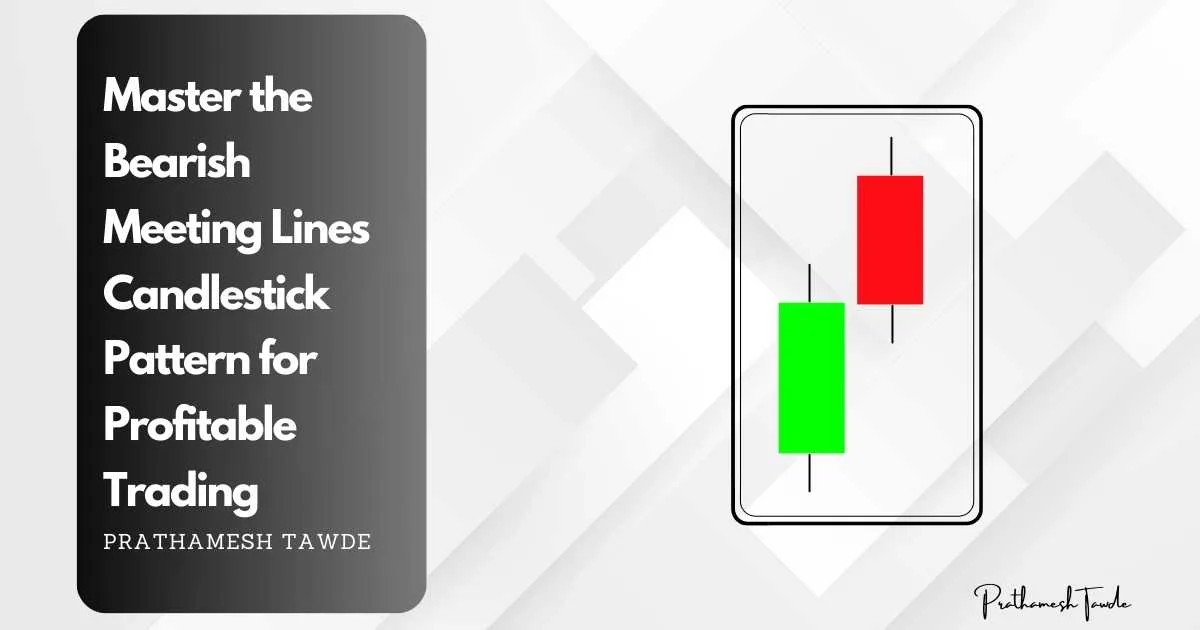Mastering the Descending Triangle Pattern for Success
- Prathamesh Tawde
- December 16, 2023
Introduction
What is a Descending Triangle Pattern?
Technical analysis is full of many patterns. Traders use them to predict markets. The Descending Triangle Pattern is one of the most significant and commonly observed patterns. This article delves deep into this pattern. It explains how it forms, its importance, and how traders can use it.
Understanding the Basics
Definition and Characteristics
A Descending Triangle Pattern is a bearish continuation pattern that appears during a downtrend. It is characterized by a series of lower highs converging towards a flat support line. This pattern suggests that sellers are more aggressive than buyers, pushing prices lower over time.
Formation Process
The pattern forms when the price makes lower highs while finding support at a constant level. This results in a triangle shape that descends from left to right. The pattern is complete when the price breaks below the support level. This break shows the downtrend will continue.
Components of a Descending Triangle Pattern
Upper Trendline
The upper trendline connects the lower highs of the price movement. This line slopes downward, reflecting the increasing selling pressure.
Lower Horizontal Line
The lower line is a support level. The price repeatedly finds support there. This line is usually flat or slightly sloped.
Volume Analysis
Volume typically decreases as the pattern forms, reflecting decreasing trading activity. A significant increase in volume often accompanies the breakout, confirming the pattern’s validity.
Identifying a Descending Triangle Pattern
Key Identification Points
1. Lower Highs: Look for a series of lower highs connecting to form the upper trendline.
2. Flat Support Line: Identify a consistent support level where the price bounces back.
3. Volume Decrease: Notice a decrease in volume as the pattern develops.
Common Mistakes to Avoid
1. Misidentifying the Trendline: Ensure that the trendline connects at least two lower highs.
2. Ignoring Volume: Volume is crucial for confirming the pattern.
3. Premature Breakout Assumptions: Wait for a clear breakout below the support level.
Psychology Behind the Pattern
Market Sentiment
The pattern reflects bearish market sentiment, with sellers gradually overpowering buyers. Buyers try to hold the price at the flat support line but descending highs reveal increasing selling pressure.
Trader Behavior
Traders observing the pattern might anticipate a breakout, positioning themselves accordingly. This collective behavior often accelerates the price movement once the breakout occurs.
Descending Triangle Pattern in Different Timeframes
Short-term Charts
The pattern might form and break within short-term charts within days or weeks. It requires quick decision-making and agile trading strategies.
Long-term Charts
In long-term charts, the pattern can span several months. It provides a broad market view. But, it may require patience before making trades.
descending triangle chart pattern with Other Chart Patterns
Descending Triangle and Symmetrical Triangle
Descending Triangle:
Shape and Trendlines: A horizontal support line and it’s a descending resistance line.
Market Sentiment: Generally, it’s bearish, indicating potential for a downward breakout.
Breakout Direction: More often than not, the breakout is downward.
Volume Pattern: Volume typically falls during the pattern and rises on the breakout. It falls mainly downward.
Shape and Trendlines: Both trendlines are converging; one is ascending and one descending.
Market Sentiment: Neutral, indicating potential for a breakout in either direction.
Breakout Direction: The breakout can be upward or downward with no inherent directional bias.
Volume Pattern: The volume also drops during the pattern. But, it rises during the breakout in either direction.
ascending and descending triangle pattern
- Trendlines: Horizontal upper trendline and upward sloping lower trendline.
Market Sentiment: Indicates increasing bullish sentiment.
Expected Breakout Direction: Breakout typically occurs upward.
Pattern Type: Bullish continuation pattern.
Descending Triangle:
Trendlines: Downward sloping upper trendline and horizontal lower trendline.
Market Sentiment: Indicates increasing bearish sentiment.
Expected Breakout Direction: Breakout typically occurs downward.
Pattern Type: Bearish continuation pattern.
Descending Triangle and Rectangle Patterns
Descending Triangle:
- Shape and Trendlines: Has a horizontal support line and a downward-sloping resistance line, forming a triangle.
- Directional Bias: Typically has a bearish bias, suggesting a higher probability of a downward breakout.
- Occurrence and Context: More commonly found in a downtrend as a continuation pattern, but can appear as a reversal in an uptrend.
- Volume Patterns: Generally sees decreasing volume until the breakout.
Rectangle Patterns:
- Shape and Trendlines: Has both support and resistance lines horizontal, forming a rectangular shape.
- Directional Bias: This is neutral until a breakout occurs. It can show a continuation or reversal. The outcome depends on the direction of the breakout.
- Occurrence and Context: It can occur in any trend: up, down, or sideways. It shows consolidation before a big move.
- Volume Patterns: Volume can vary more. It often stays stable within the pattern. It usually increases at the breakout.
Trading Strategies Using Descending Triangle Pattern
Breakout Strategy
The most common strategy is to trade the breakout below the support line. Traders enter short positions when the price breaks down. They aim to profit from the downtrend’s continuation.
Pullback Strategy
Some traders wait for a pullback to the broken support level. It’s now resistance. They wait for this before entering a trade. This can provide a better risk-to-reward ratio.
Risk Management Techniques
- Stop-Loss Orders: Place stop-loss orders above the upper trendline to limit potential losses.
- Position Sizing: Adjust position sizes according to risk tolerance and account size.
Case Studies and Examples
Historical Examples
Review historical charts to see past instances of the Descending Triangle Pattern. Analyzing these examples helps understand the pattern’s behavior and outcomes.
Real-time Trading Scenarios
Use real-time charts to practice identifying and trading the pattern. This hands-on experience is invaluable for mastering the strategy.
Tools and Indicators to Use
Moving Averages
Moving averages help smooth out price action. This makes it easier to see the pattern and possible breakout points.
Volume Indicators
Volume indicators show changes in trading activity. They are crucial for confirming breakouts. The On-Balance Volume (OBV) is one such indicator.
Common Pitfalls and Challenges
False Breakouts
False breakouts occur when the price breaks the support line but quickly reverses. To avoid this, wait for a clear close below the support level with increased volume.
Misinterpretation of Signals
Ensure thorough analysis before acting on a pattern. Combine the Descending Triangle with other technical indicators to avoid misinterpretation.
Advanced Techniques and Tips
Combining Patterns
Use the Descending Triangle with other patterns and indicators. This will increase your trade accuracy.
Using Multiple Timeframes
Analyze the pattern across multiple timeframes to get a comprehensive market view. This helps in making well-informed trading decisions.
Software and Platforms for Chart Analysis
Popular Trading Platforms
Platforms like TradingView offer robust tools for chart analysis, including pattern recognition features.
Practical Tips for Traders
Entry and Exit Points
Clearly define your entry and exit points before trading. Use the breakout point for entry and set realistic profit targets.
Setting Stop-Loss and Take-Profit Levels
Place stop-loss orders strategically to minimize losses. Set take-profit levels based on the pattern’s projected price movement.
Conclusion
The Descending Triangle Pattern is a powerful tool in technical analysis. It gives valuable insights into market sentiment and potential price moves. By understanding how it forms, finding key parts, and using good strategies. Traders can greatly improve. Remember to use this pattern with other indicators. Also, keep disciplined risk management.
FAQs
The success rate of descending triangle patterns can vary. It depends on market conditions and the timeframe. They generally have a moderate to high success rate. This is when combined with volume analysis and proper risk management.
The formation duration of a descending triangle pattern can vary. The time can vary. It depends on the timeframe and market. It can take from a few weeks to several months.
Descending triangles work in many time frames. But, they are more reliable in longer ones, like daily or weekly charts. In those longer frames, the signals are more important.
Many people believe two things about the pattern. They think it always leads to a drop and guarantees profits. It often signals a bearish trend. But, false breakouts can happen. Proper risk management is key.

I’m Prathamesh Tawde, a leading figure in the dynamic world of financial markets. Born on March 30, 1986, in the vibrant city of Thane, Maharashtra, I’ve nurtured a profound passion for technical analysis and a commitment to guiding individuals toward successful trading journeys. With a mission to empower and educate, I’ve carved a distinct niche as a content creator, educator, and mentor.





